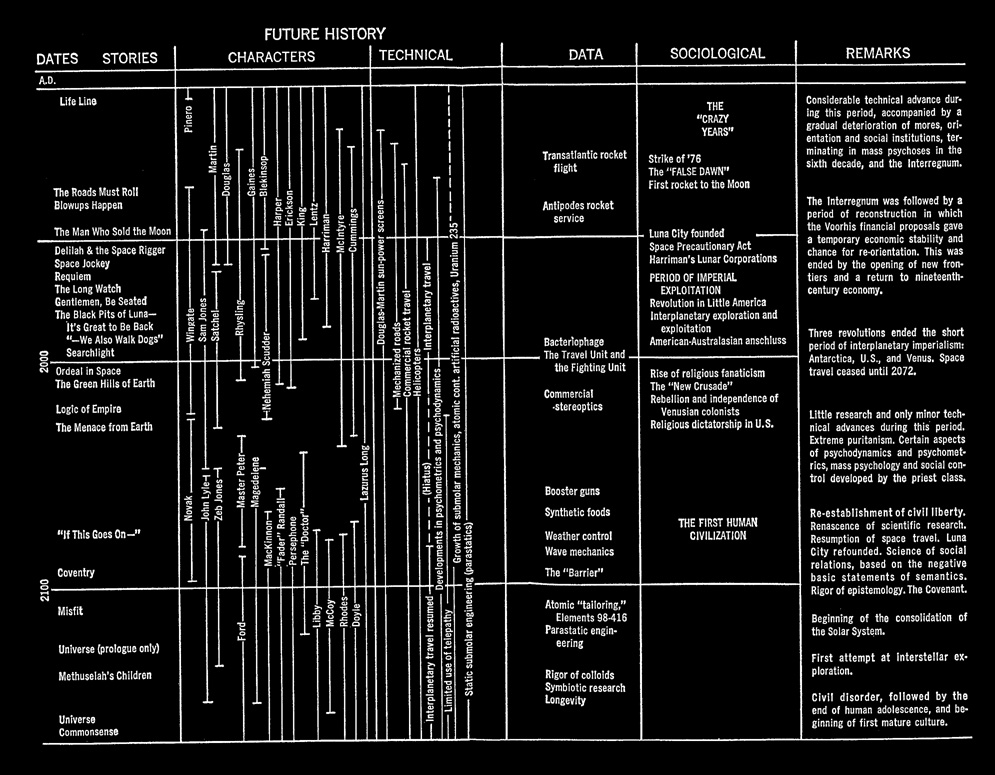In his recent USA Today column, Glenn “Instapundit” Reynolds gives a shout-out to Robert A. Heinlein’s pre-WW2-era “Future History” timeline which included a segment presciently called “The Crazy Years”:
Very early in his writing career, about 1940, science fiction writer Robert Heinlein outlined a “future history” around which much of his writing would revolve, extending from the mid-twentieth century to the 24th century. Much of what he outlined hasn’t come to pass, but he nailed it in one respect: We live in the “Crazy Years.”
The Crazy Years, in Heinlein’s timeline, were when rapid changes in technology, together with the disruption those changes caused in mores and economics, caused society to, well, go crazy. They ran from the last couple of decades of the 20th Century into the first couple of decades of the 21st. In some of his novels set in that era — Time Enough for Love, for example — he includes random assortments of headlines that may have seemed crazy enough back then, but that seem downright tame today.
I’m not the first to make this connection — science fiction writers John C. Wright and Sarah Hoyt have remarked on it, and as Hoyt notes, “these are the Crazy Years” has become something of a stock joke among Heinlein fans.
But what does that mean? As Wright observes — invoking not only Heinlein but his contemporary A.E. Van Vogt, “craziness” comes when beliefs don’t match facts:
“Craziness can be measured by maladaptive behavior. The behavior the society uses to solve one kind of problem, when applied to an incorrect category, disorients it. When this happens the whole society, even if some members are aware of the disorientation, cannot reach the correct conclusion, or react in a fashion that preserves society from harm. As if society were a dolphin that called itself a fish: when it suffered the sensation of drowning, it would dive. But a dolphin is a mammal, a member of a different category of being. When dolphins are low on air, they surface, rather than dive. Putting yourself in the wrong category leads to the wrong behavior.”




